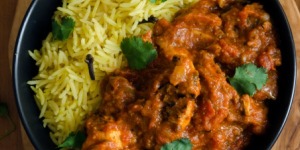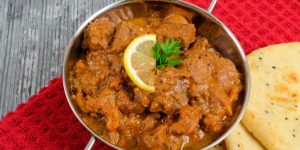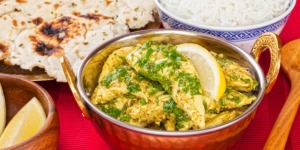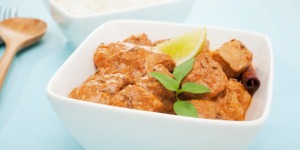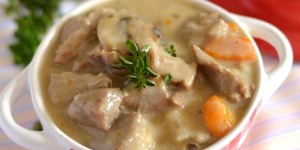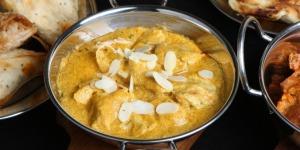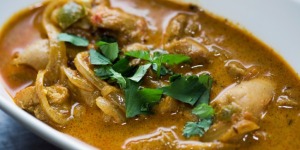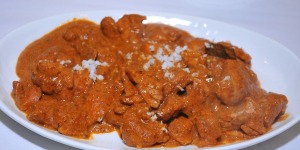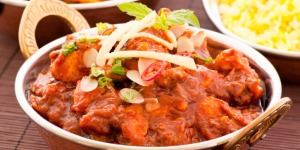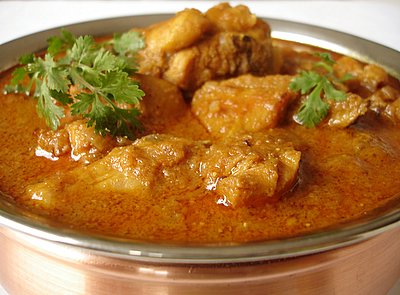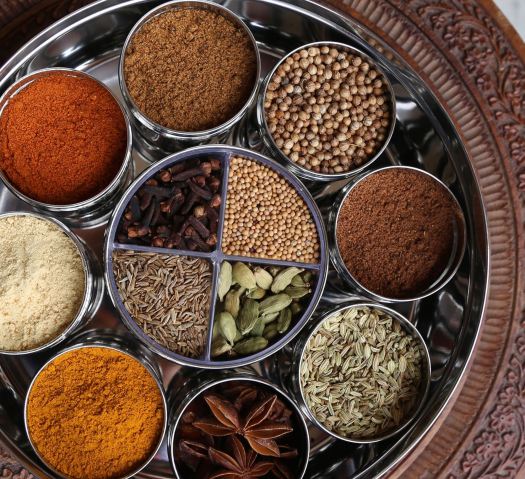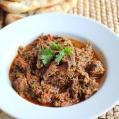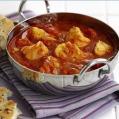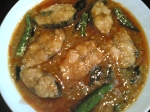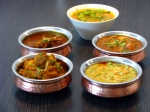Apart from adding colour, flavour and taste, consumption of spices provide infinite health benefits. You can be more creative in the use of spices if you know its uses better. Some may be a substitute to your costly beauty products and even medicines. Here is a quick overview of the most important spices used in Indian cooking, their uses and benefits. (Source: IndiaParenting.com)
| Spices | Uses | Benefits |
|---|---|---|
| Asafoetida (Hing) | It is used for seasoning food especially snacks. | A good remedy for whooping cough and stomach ache due to gas. |
| Bay leaf (Tez Patta) | It is used in cooking to add a specific flavour to food. | Bay leaf oil possesses antifungal and anti bacterial properties. |
| Cardamom (Elaichi) | Commonly used in sweet dishes to give a good flavour and smell. It is also used widely in pharmaceutical sector. | Helps to control bad breath and digestive disorder. A whole cardamom chewed is good for coping with diabetes. |
| Chilli (Lal Mirch) | Main ingredient used for adding spicy flavour to the food. | The antioxidants present in chilli helps to cope with cholesterol and helps to burn calories. |
| Cinnamon (Dalchini) | Commonly used to season the food and to prepare masala. | It supports natural production of insulin and reduces blood cholesterol. |
| Clove (Laung) | Like cinnamon, clove is used to season the food and to prepare masala. | Clove oil is beneficial for coping with tooth ache and sore gums. It is also a beneficial remedy for chest pain, fever, digestive problems, and cough and cold. |
| Coriander (Dhaniya) | Coriander leaves, seeds and powder are a common ingredient in Indian cooking. | It can be used externally on aching joints and rheumatism. Helps with soar throat, allergies, digestion problems, and fever. |
| Cumin (Zeera) | Another common ingredient used in Indian cooking for it’s earthy flavour. | A good source of iron which keeps the immune system healthy. Water boiled with cumin seeds is good for coping with dysentery. |
| Curry leaves(Curry Patta) | Commonly ingredient found in South India cuisine. | These leaves are beneficial for reducing blood sugar. Each part of the plant provides some benefit or the other. The dried leaves are extensively used in herbal medicines. |
| Fenugreek (Methi) | Mainly used as a green leafy vegetable and the seeds are used for seasoning and preparing Masalas. | Fenugreek tea is good for increasing breast milk. It also helps to treat diabetes and lower cholesterol level. |
| Garlic (Lassan) | It is used for cooking as well as for the medicinal purpose. | The antibiotic properties found in this ingredient is used to cope with cough and cold. |
| Ginger (Adrak) | It is used for giving a specific flavour to food and has many medicinal uses. | Helps to avoid digestive problems. It is beneficial for coping with cough and cold. |
| Mustard (Rye) | It is used for seasoning . The use of mustard oil is extensive in India but banned in some countries. | Mustard oil is good for body massage and growing healthy hair. It consists of omega-3 fatty acids and is an excellent source of iron, zinc, manganese, calcium, and protein. |
| Nutmeg (Jaiphal) | Used for garnishing and masala preparation. It is used in soaps, perfumes and shampoos. | It is beneficial for the treatment of asthma, heart disorder and bad breath. |
| Pepper (Kaali Mirch) | It is extensively used in cooking, especially for garnishing. | The healing properties in this ingredient helps to treat muscle pain, digestive problems, cold, cough and infection. |
| Saffron (Zaffran/Kesar) | It is used for cooking as well as in beauty products. It is mainly used in sweet dishes. | It helps to cope with skin diseases. It is a good remedy for cough, cold and asthma when mixed with hot milk. |
| Star anise (Chakra Phool) | It is used in cooking and for medicinal purpose | Star anise oil is beneficial for rheumatism, digestion and bad breadth. |
| Turmeric (Haldi) | It is used in cooking and skin care products. It has a wide range of medicinal uses. | Turmeric is used for arthritis, heartburn, stomach pain, diarrhea, intestinal gas, stomach bloating, loss of appetite, jaundice, liver problems and gallbladder disorders. It is also used for headaches, bronchitis, cold, lung infections, fibromyalgia, leprosy, fever, menstrual problems, and cancer. Other uses include depression, Alzheimer’s disease, water retention, worms, and kidney problems.Some people apply turmeric to the skin for pain, ringworm, bruising, leech bites, eye infections, inflammatory skin conditions, soreness inside of the mouth, and infected wounds.In food and manufacturing, the essential oil of turmeric is used in perfumes, and its resin is used as a flavor and color component in foods. |

